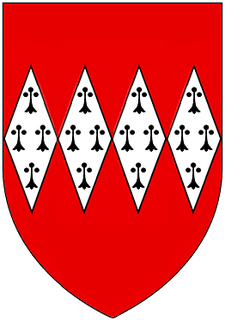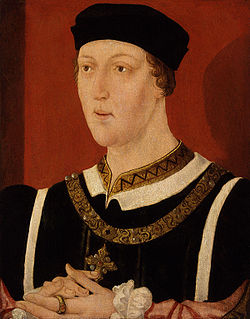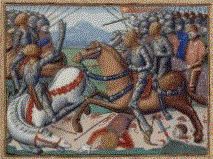
Bartholomew de Badlesmere, 1st Baron Badlesmere was an English soldier, diplomat, Member of Parliament, landowner and nobleman. He was the son and heir of Sir Gunselin de Badlesmere and Joan FitzBernard. He fought in the English army both in France and Scotland during the later years of the reign of Edward I of England and the earlier part of the reign of Edward II of England. He was executed after participating in an unsuccessful rebellion led by the Earl of Lancaster.

Nicholas de Crioll, of a family seated in Kent, was Constable of Dover Castle and Keeper of the Coast during the early 1260s. His kinsman Bertram de Criol had distinguished himself in these offices during the preceding 20 years and both were near predecessors of the eminent Warden of the Cinque Ports, Stephen de Pencester.

Giles de Badlesmere, 2nd Baron Badlesmere was an English nobleman.
Guncelin de Badlesmere (c.1232–c.1301), son of Bartholomew de Badlesmere, was Justice of Chester and Cheshire in England.
Sir Nicholas Haute, of Wadden Hall (Wadenhall) in Petham and Waltham, with manors extending into Lower Hardres, Elmsted and Bishopsbourne, in the county of Kent, was an English knight, landowner and politician.
William Haute (1390–1462), of Bishopsbourne, Kent, was an English politician.

Sir John Dinham (1406–1458) was a knight from Devonshire, England. His principal seats were at Nutwell and Kingskerswell in South Devon and Hartland in North Devon.
William Gage was a major landowner and the father of the Tudor courtier Sir John Gage KG.

John Darras (c.1355–1408) was an English soldier, politician and landowner, who fought in the Hundred Years' War and against the Glyndŵr Rising. A client of the FitzAlan Earls of Arundel, he served them in war and peace, helping consolidate their domination of his native county of Shropshire. He represented Shropshire twice in the House of Commons of England. He died by his own hand.
Margaret de Vere was an English noblewoman, a daughter of John de Vere, 7th Earl of Oxford and his wife Maud de Badlesmere.
Sir Nicholas de Loveyne was a major English property owner and courtier, who held a number of senior positions in the service of King Edward III.

Sir John de Pulteney or Sir John Poultney was a major English entrepreneur and property owner, who served four times as Mayor of London.
Sir Thomas Boyville (c.1370-1401) was a substantial landowner and both a son and father of Members of Parliament.

Sir John Cornwall (c.1366–1414) was an English soldier, politician and landowner, who fought in the Hundred Years' War and against the Glyndŵr Rising. He had considerable prestige, claiming royal descent. As he was part of the Lancastrian affinity, the retainers of John of Gaunt, he received considerable royal favour under Henry IV. He represented Shropshire twice in the House of Commons of England. However, he regularly attracted accusations of violence, intimidation and legal chicanery. Towards the end of his life he fell into disfavour and he died while awaiting trial in connection with a murder.
Nicholas Gainsford, also written Gaynesford or Gaynesforde, of Carshalton, Surrey, of an armigerous gentry family established at Crowhurst, was a Justice of the Peace, several times Member of Parliament and High Sheriff of Surrey and Sussex, Constable and Keeper of Odiham Castle and Park, Hampshire, who served in the royal households from around 1461 until his death in 1498. Rising to high office during the reign of Henry VI, he was an Usher to the Chamber of Edward IV and, by 1476, to his queen Elizabeth Woodville. Closely within the sphere of Woodville patronage, he was a favourer of Edward V, and was a leader in the Kentish rising of 1483 against Richard III. He was attainted in 1483, but was soon afterwards pardoned, and fully regained his position and estate as Esquire to Henry VII and Elizabeth of York after the Battle of Bosworth Field. He established the Carshalton branch of the Gainsford family.
Margaret de Bereford was a substantial English property owner whose husbands were notable as merchants, soldiers or courtiers in the service of King Edward III.










